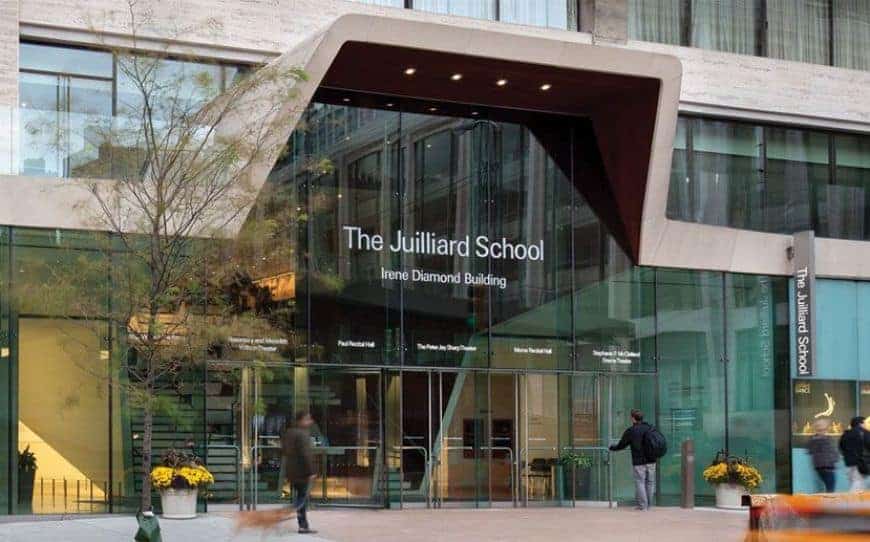A quick guide for prospective foreign students by the staff at IMS.
by Inside Music Schools
Studying Music in the United States
Inside Music Schools has helped many international music students seek acceptance at colleges and conservatories in the United States. We hear the same questions from many of them. You likely have the same questions if you are one of the many international musicians wanting to study in America. So, we thought we’d dedicate this post to answering some of the frequently asked questions we receive.
Which schools accept international students?
Just about every American college welcomes students from foreign countries. Many actively recruit them as a way of helping their school’s diversity to enrich the education of their students. In general, you can also expect to be accepted by your classmates. There are a few countries from which there are no students in the United States, like Cuba and North Korea, but this has more to do with political issues than college policy.
What types of schools are there in the United States?
There are different types of institutions of higher education (beyond high school) in the United States. While the terms college and university are often used interchangeably in casual conversation, there is a difference. Basically speaking, a college is a small school for undergraduate study. Many colleges champion the liberal arts—academic disciplines like literature, history, languages, philosophy, mathematics, and general sciences. This is in contrast with such professional and technical disciplines as business and engineering.
Many liberal arts colleges treat music as an academic discipline rather than a professional one. That means you take fewer courses to train you to become a professional musician and more in humanities courses to help make sure you receive a well-rounded education. This type of degree is known as a Bachelor of Arts. As a musician at most liberal arts colleges, you would receive a bachelor of arts in music degree.
How is a university different?
In comparison to colleges, most universities are large institutions that teach both undergraduate and graduate students. They are typically made up of various schools and/or colleges, such as a school of medicine, a school of architecture, and a school of foreign languages. Most universities also have a school of music. While some of these offer a Bachelor of Arts in music, the emphasis is usually on the Bachelor of Music degree. It requires more study in music and less in the humanities and other general education disciplines. It is a professional degree.
What about conservatories?

A conservatory stands as the third type of music school in the United States. It specializes in one or more of the fine arts—music, acting, dance, and the like. Conservatories in the United States developed to first foster classical music but have come to embrace jazz and other forms of music. Juilliard is a well-known conservatory in our country. Conservatories tend to be small, hundreds rather than thousands of students. However, Berklee College of Music in Boston is the world’s largest music school in the world and can be seen as a conservatory.
To keep things simple for the rest of this post, we’ll use the terms college and school to refer to all types of institutions of higher education. We’ll also use America to refer to just the United States even though the word includes other countries in this continent.
What is a for-profit school?
When we talk about colleges in this article, we are mainly referring to not-for-profit institutions. We tend to think of these as purer in intent since they focus on education more than their financial bottom line. Almost all are accredited by a regional agency that helps assure the quality of education you receive.
For-profit schools are just that, “for profit“. They include some well-known music institutions. Some offer quality education to their students while others are more questionable. Some are also accredited while others are not. If you are considering a for-profit college, look closely at its reputation.
How well do I need to know English?
The need to understand English is one of the first things we have to point out to international students who approach Inside Music Schools for help. Almost every college in the United States requires a certain proficiency in English. This makes sense as you will be studying in English. Most schools will expect you to have received a good score on a Test of English as a Foreign Language (TOEFL) exam. You can find practice TOEFL exams online.
What does it cost to go to school in the United States?
The cost of going to school in the United States is the other thing we have to emphasize with international students. It is because it can cost a lot of money. The average tuition for a publicly supported, four-year university is around $20,000 if you are a non-resident of the state where the school is located. (All international students are considered non-residents.) The average cost to attend a private institution is closer to $40,000 a year no matter where you call home. A year’s tuition at a top conservatory is over $50,000, not including the cost of room and board.
Can I get scholarships?
Given the cost of going to school in the United States, international students are often interested in receiving scholarships. American colleges basically offer two types of financial assistance. The first helps need-based students and mainly go to American citizens of low income. Scholarships are talent-based and are awarded to highly skilled musicians, especially ones that are of interest to a particular school.
You should not necessarily expect to receive a scholarship from an American college to go to school as a music student from a foreign country. Sadly, if you cannot afford full tuition, you probably cannot afford to study here unless you can find some sort of scholarship in your home country to support students studying abroad. You can read more about music school scholarships here.
Are there other costs?
Tuition is just one of the expenses of going to school in America. You must also pay for room and board, textbooks, supplies, local transportation, and personal expenses. That’s in addition to flying to the city where a college is located and back home at the end of the school year. Together, these expenses can add up to almost as much as tuition itself.
College students around the world find ways of living cheaply. So do students in the United States. Still, you must budget.
How about visas and work?
International students are required to enter the United States with a F-1 student visa. Once accepted, the college will send you an I-20 form which you will take to the U.S Embassy in your country in order to receive the visa. Be sure to consult the American Department of State for the most current information.
International students are not permitted to work in the United States while they are on a student visa.
Contact Us
Did you find this blog helpful? Do you picture yourself in a music career? If the answer to that is a “yes”, your next step is simple. Contact insidemusicschools.com and allow our team of industry insiders to guide you toward your goal of being a professional in the music industry. Through expert counseling and real world experience, we will make sure you are prepared for the journey
How can Inside Music Schools assist an international student?
At Inside Music Schools, we help college-bound music students move decisively toward their future.
Visit Insidemusicschools.com and contact our staff. You can click this link to contact our staff directly and allow us to guide you during this process.
Founder & President at Inside Music Schools | Insidemusicschools.com
Head of admissions and faculty member at Berklee College of Music for 40 years, Steve Lipman and our team at Inside Music Schools speak music as their primary language. We approach each client contact with open eyes, ears, and minds. As the country’s premier music school consultant, he has advised students from the United States, Canada, the U.K., India, Singapore, Dubai, China, Australia, Turkey, Colombia, Argentina, Brazil, Japan, Israel, Italy, Russia and elsewhere.

